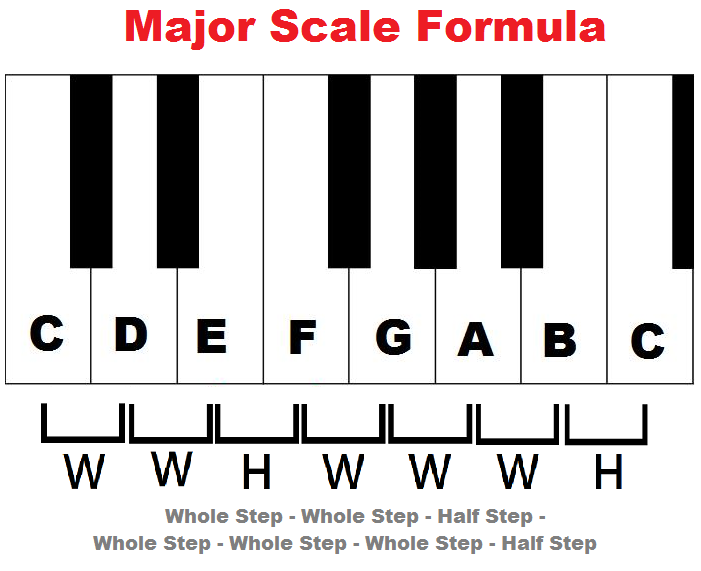
Learn major scales piano, treble clef, charts, pattern/formula, chords music theory
Formula The major scale formula is W-W-H-W-W-W-H. This stands for whole step, whole step, half step, whole step, whole step, half step. You can for any major scale using this formula. Half steps and whole steps are the distance from one key to another. A half step is the distance from one key to the key that is closest to it.
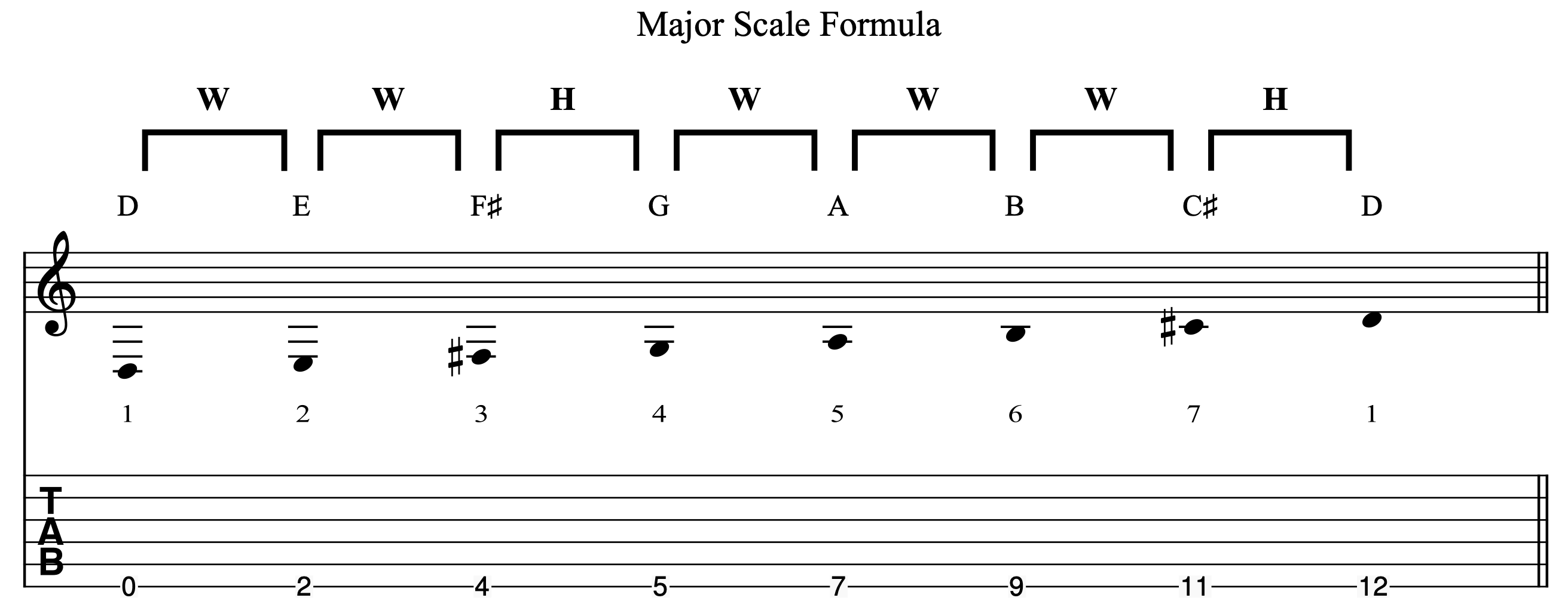
The Allimportant Major scale Open D Tuning
The major scale is a fundamental and widely-used musical scale that consists of seven distinct notes. It is characterised by its uplifting, happy, and consonant sound, making it a go-to choice for countless musical compositions across various genres. When you think of the classic "do-re-mi-fa-so-la-ti-do" pattern, you're essentially.
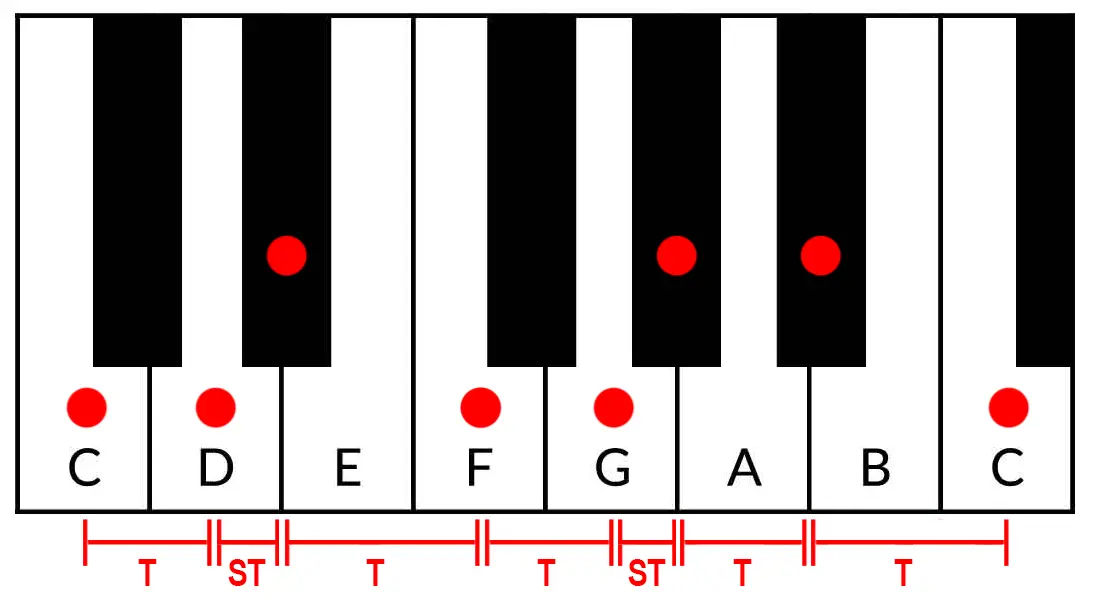
The Formula To Major & Minor Scales
Constructing a C Major Scale. The formula for creating a major scale is "whole, whole, half, whole, whole, whole, half.". This means if we start on c, we must go up 2 adjacent notes to get to the next note, which is d. That's the first "whole" and let's follow the whole formula through: whole: c to d. whole: d to e.

The Major Scale Formula Free Guitar Lessons
Some people roll their eyes at the mention of theory and scales, but you don't have to be one of them. In this post I'm going to share some practical knowledge with you about something that will be foundational in your rhythm and lead guitar playing for years to come, major scales and the formula (pattern) to build them.

Scale Formulas Discover Guitar Online, Learn to Play Guitar
Spelling the Major Scale by Whole/Half Steps. To make sure you know how to form the scale, I provided a step-by-step. Start with the root note for the key you are using. In the key of F, your root is F. Follow the interval formula for a major scale (W-W-H-W-W-W-H). A whole step up from F is G. A whole step up from G is A. A half step up from A.

Major Scale Formula Music Theory on the Piano YouTube
The Eb (flat) major scale starts and ends with the note Eb. Constructing this type of scale is rather simple if we employ a simple formula. This formula has to do with the distance (intervals) between the notes. Below is the formula we use to construct these scales using Whole Steps (W) and Half Steps (H). W W H W W W H.
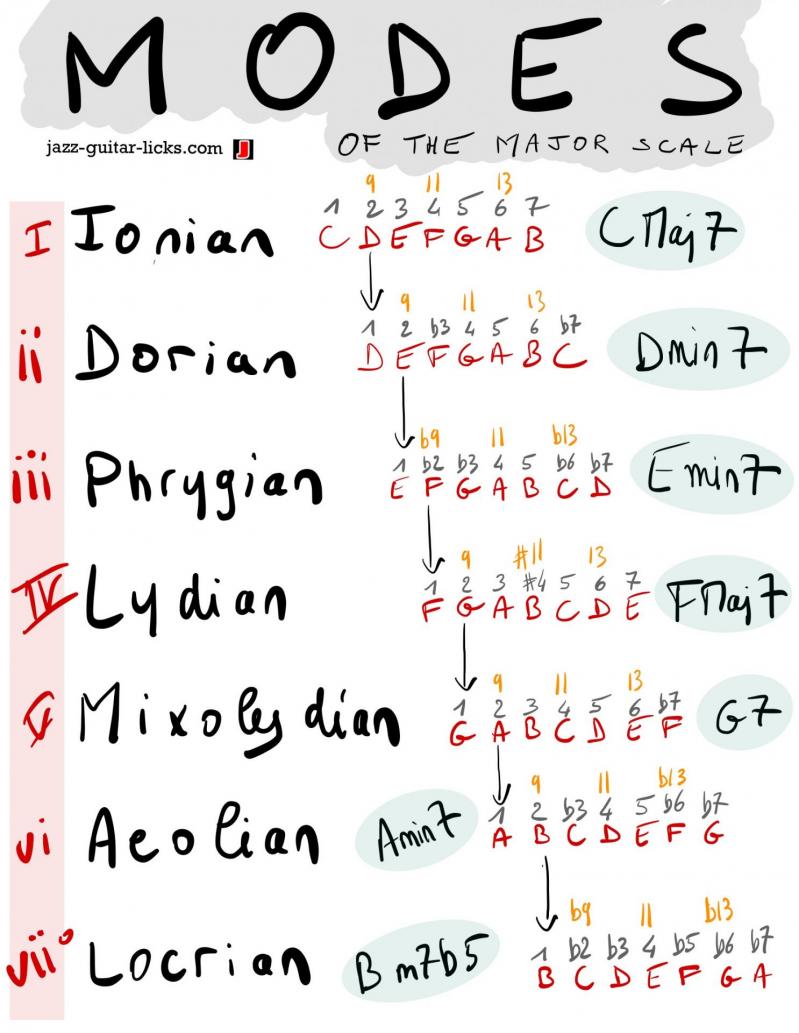
Modes of The Major Scale Music Theory
The A major scale has 3 sharps. This major scale key is on the Circle of 5ths - A major on circle of 5ths, which means that it is a commonly used major scale key. Middle C (midi note 60) is shown with an orange line under the 2nd note on the piano diagram. These note names are shown below on the treble clef followed by the bass clef.

Major Scale Formula
Scales and Keys. Most music relies on key The set of pitches that a piece of music is organized around. A key has two components: a tonal center and some sort of scale, or set of pitches used for creating harmony and melody., a choice to use a pattern of seven notes forming a set called the major scale.The major scale is a series of 7 notes that are a subset of the 12 notes in the chromatic.

major scale formula Pickin' Lessons
A half step from E is F. A whole step from F is G. A whole step from G is A. A whole step from A is B. A half step from B is C, back to the top. So, the C major scale ends up looking like this: Writing Major Scales in Any Key The above 'major scale formula' is all you need to write a major scale in any key.

Piano Basics Scales, Keys & Major Scale Formula (Part 1) YouTube
The pattern of whole and half steps characteristic of a major scale The intervals from the tonic (keynote) in an upward direction to the second, to the third, to the sixth, and to the seventh scale degrees of a major scale are called major. [1] A major scale is a diatonic scale. The sequence of intervals between the notes of a major scale is:

Major Scale Formula YouTube
Locrian Mode. The formula for this mode is 1, b2, b3, 4, b5, b6, and b7. The notes for G Locrian, when compared to G major, are G, Ab, Bb, C, Db, Eb, and F. This mode is considered a minor sounding scale due to the b3, or minor third. Notice this mode has the most altercations with the exception of the 1 and 4.
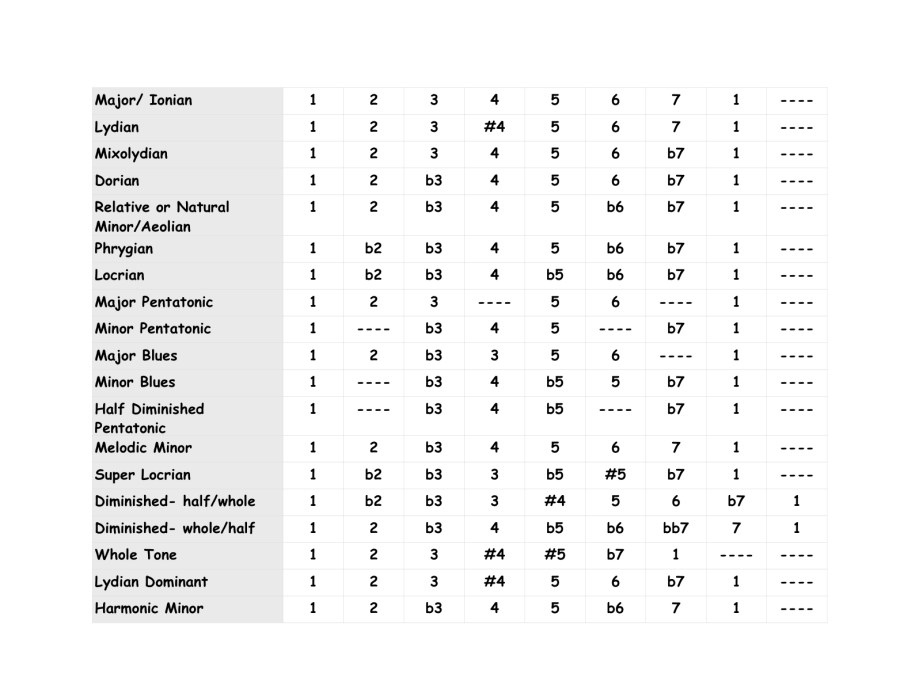
Scale Formulas Self Taught Guitar Lessons
5 patterns of the major and minor scales for each major and minor key. Theory behind building key chords from major and minor scales. 103 pages. Price: $9.99. A Major scale on guitar. This scale reference contains the notes, formula, structure, positions, chords, and modes for A Major.
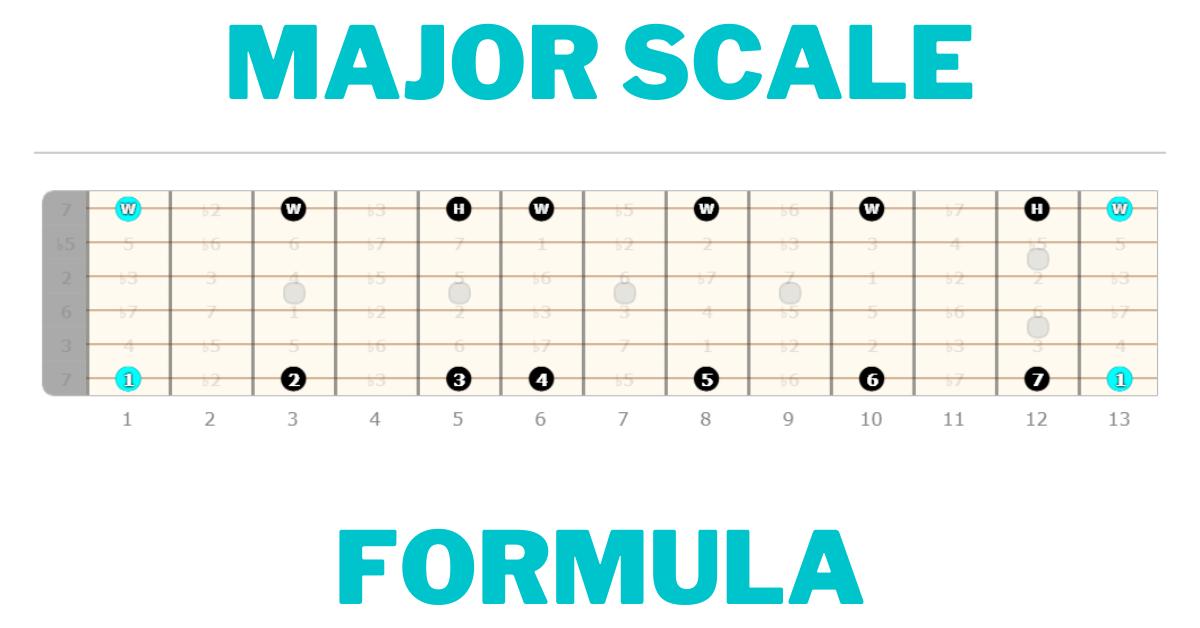
Major Scale Formula Definition (Guitar) Guitarfluence
As long as you know the major scale formula, you can start on any note or key and form a major scale. Starting on C, go up a whole step to D, a whole step to E, a half step to F, a whole step to G, a whole step to A, a whole step to B and lastly, a half step to C. My new book, Piano Scales Made Simple , will help you with your scales.
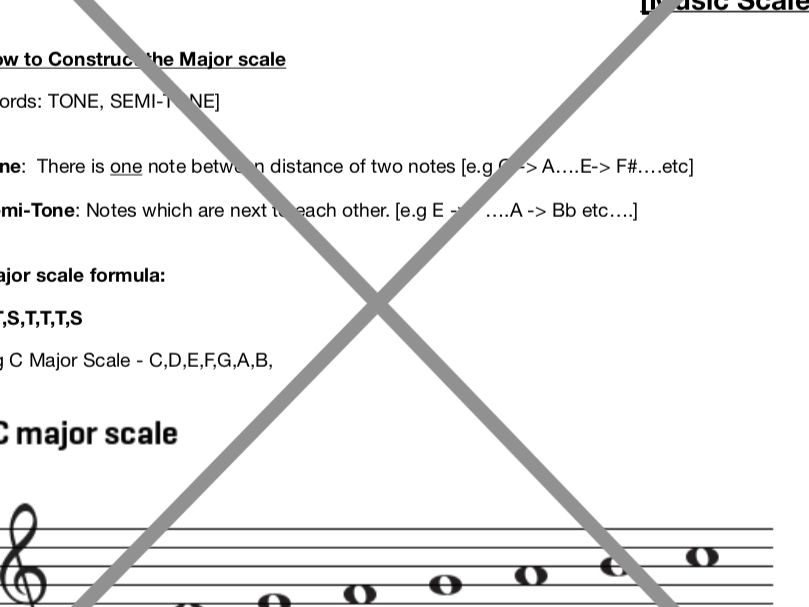
Major Scale Formula Teaching Resources
To make a major scale, we just have to follow a very simple formula of semitones and tones (whole steps and half steps) between each note. That formula is: T - T - S - T - T - T - S Or in whole and half steps, a major scale would be this formula: W - W - H - W - W - W - H

The Formula To Major & Minor Scales
The Major Scale The major scale consists of 7 notes and an octave note (the root note played an octave higher/lower). If we take a look at the G major scale, its notes are as follows: Listen to the audio to hear how the G major scale sounds: Major Scale Pattern of Steps

The Minor Scale » Lead Guitar Lessons
The Major Scale A scale is a selection of certain notes within an octave. The first scale that we will discuss is the major scale. The major scale is constructed with this formula. W's represent whole steps and h's represent half steps. Let's build a C Major Scale. Our starting note will be C. From the C, we will take a whole step to D.